Oriental dance : Love for the Iraqi dance
Maïssane NARJIS tells us about this original dance which seduces more and more oriental dancers and is currently the subject of many workshops and stage performances in festivals. An opportunity to know the atypical career of this talented bellydancer who, between personal anecdotes and sincerity, charms us with her personality combining humor, natural and sensitivity!
What are the Iraqi dance’s characteristics (history, steps, moves, combinations, technical nature…)?
 Iraqi dance, more specifically called Kawleeya worldwide, belongs to the Khaleeji dances (from the Gulf countries). Originally from Iraq, it is practiced by gypsy women.
Iraqi dance, more specifically called Kawleeya worldwide, belongs to the Khaleeji dances (from the Gulf countries). Originally from Iraq, it is practiced by gypsy women.
This dance is easily recognizable by its energic hairwork (=hairwork) and is close to the Khaleeji dances with the stress of the steps towards / in the ground (=down). It’s a dynamic dance, marked by rebounds (=bounces) in the ground, and whose hairwork is varied and numerous (circles, eights, shimmy...) but also intense.
It’s also possible for the Kawleeya dancer to do floorwork (=floorwork) often to bring the hairwork to a trance and the piece to a high point.  If we had to mention other specificities of the Iraqi Kawleeya dance, we’ll speak of the finger snapping, inspired by Persian dances or the use of daggers. The dancer would point her daggers on the hips, belly, and shoulders, one of these gestures meaning being to follow your love til death… We can’t compare the Iraqi to the classic Bellydance because they are so different, even if the hip and shoulders moves are in both dances. But we can compare it to Khaleeji. The difference is in the dance atmosphere and the attitude of the dancer, her energy.
If we had to mention other specificities of the Iraqi Kawleeya dance, we’ll speak of the finger snapping, inspired by Persian dances or the use of daggers. The dancer would point her daggers on the hips, belly, and shoulders, one of these gestures meaning being to follow your love til death… We can’t compare the Iraqi to the classic Bellydance because they are so different, even if the hip and shoulders moves are in both dances. But we can compare it to Khaleeji. The difference is in the dance atmosphere and the attitude of the dancer, her energy.
According to my personal interpretation and feeling and I’d say that the Kawleeya dancer is much harder, energetic, rough, less « modest » and a little somber unlike the Khaleeji dancer who for me personifies lightness, grace, freshness, elegance... These are 2 remote universes and I like these dances because of what they represent.
Currently, the Iraqi dance, which was a dance not well known and very confidential, is practiced all over the world and in constant evolution, one find there influences of the classical dances in the arm or other postures used.
What’s the perfect outfit, and what kind of music should we use for the Iraqi dance?
The perfect outfit is a long close-fitting dress, not revealing the legs or belly. The hips can be decorated to highlight the movements. Shoulders and bust can be bare.
We often recognize the Iraqi music because of the Khishba, percussion played very fast, which sound like machine guns. One of the great artists to dance the Iraqi Kawleeya is the singer Sajeda Obeid with the titles « Shged » and « Khala ».
When and where can our customers find you and sign up for your Oriental and Iraqi dance classes ?
I give weekly evening Bellydance classes in Toulouse (France) in several schools and facilities and several theme-based workshops at weekends.
I’ll also have the opportunity to lead a workshop around the Iraqi dance for the Festiv'al Shimmy, in Motte-en-Provence on the weekend of March 23rd. For those who wish to sign up and discover this style with little practice and teaching in France, please contact Aude Mathis, in charge of this festival, and who invited me!
What’s your career in dancing?
 I always practiced dance or other activities related to performing arts when I was young, and to be honest I was also a big fan of Shakira, so we can say that she initiated me to my first hip movements when I was a child! I discovered Oriental dance and push the door to my first Bellydance lesson when I was 13 in a Mjc in Rodez. It was love at first sight for this dance which spoke to and revealed me. I remember that the first thing which fascinated me in this dance was its feminine power and characters! Since then I’ve never stopped training with French and international dancers.
I always practiced dance or other activities related to performing arts when I was young, and to be honest I was also a big fan of Shakira, so we can say that she initiated me to my first hip movements when I was a child! I discovered Oriental dance and push the door to my first Bellydance lesson when I was 13 in a Mjc in Rodez. It was love at first sight for this dance which spoke to and revealed me. I remember that the first thing which fascinated me in this dance was its feminine power and characters! Since then I’ve never stopped training with French and international dancers.
I believe I fell in love with Bellydancing when I was 17 after meeting Dariya Mitskevich, whom I admired for her artistic feeling and personality. I must say that she was probably the most important vector for my progress as a dancer. I progressed very quickly and was encouraged by my entourage and teachers to teach in Rodez at the age of 18. At 21, I arrived in Toulouse with my little bag from Rodez, some stage experiences in French festivals, and I introduced Oriental dance in one of the biggest schools of the city, the 144. Thanks to the directors who trusted me and saw in me a promising bellydancer and teacher. I believe it was the deciding event in settling rapidly in Toulouse and offering my lessons in several schools and other facilities.  I never won any oriental dance competition. Which is funny, despite my attendance in important Bellydance events in France, my work was really noticed thanks to the videos of my performances in restaurants or even the videos recorded using cell phones of my own event « L'Orient dans tous ses états » which I’ve organized for 3 years. The first organizers in the field who believed in me and gave me the opportunity to express myself as a professional bellydancer on stage were : Maryam de Suisse (Esquisse d'Orient), Meryem Coing (Al Wafaa) and Soraya Saadi (Et si l'orient m'était conté). I thank them from the bottom of my heart because, thanks to them, my career took a great turn at the national level. Today, I have new opportunities to dance and teach in France and Switzerland, and I hope this is just the beginning…
I never won any oriental dance competition. Which is funny, despite my attendance in important Bellydance events in France, my work was really noticed thanks to the videos of my performances in restaurants or even the videos recorded using cell phones of my own event « L'Orient dans tous ses états » which I’ve organized for 3 years. The first organizers in the field who believed in me and gave me the opportunity to express myself as a professional bellydancer on stage were : Maryam de Suisse (Esquisse d'Orient), Meryem Coing (Al Wafaa) and Soraya Saadi (Et si l'orient m'était conté). I thank them from the bottom of my heart because, thanks to them, my career took a great turn at the national level. Today, I have new opportunities to dance and teach in France and Switzerland, and I hope this is just the beginning…
What kind of Bellydance costume do you like wearing onstage and during your lessons?
I like the work of Eastern countries designers. I love the elegance of their Bellydance costumes and their delicacy, as well as their inspirations for the ballroom dance outfits. I like the work of Patrycja Marzec or Aliah Kluchenkova (Poland).
During Bellydance classes, I wear trendy workout dance outfits, not really oriental ones: short skirts, dance tights, tops and leg warmers. I’ve been a big fan of leg warmers since this winter: useful and comfortable to keep my knees and ankles warm (it’s important !)
What are your 3 favorite Oriental music titles and why?

Humm... Pass?! I listen and like too many oriental music titles! But I’ll talk to you about some which are special to me.
- « Ma wahachnak » from Mohammed Assaf : I remember discovering this musical gem on a summer evening and spending the night listening to it at least 100 times and crying non-stop as it echoed in me during this period of my life. The title means « Have I missed you? », from which I created a solo with a whole game of Bellydance veil to express my feelings, my sorrows. For the little crunchy anecdote ;-) this solo was inspired by a break up with a boy who wasn’t very kind to me and it was very complicated to perform it onstage because I couldn’t forget my sorrows. I finally managed to dance it for me and with my heart in Lyon on the stage of the Festival « Et si l'orient m'était conté »... If this person reads this interview I’d like to tell him: Thanks for the solo, but I don’t miss you anymore! ;-)
- « That's freedom » from Artem Uzunov : I also have a funny anecdote about the creation of this solo! At this time, I was regularly working at a restaurant On the Atlantic coast and one evening, the boss was quite nasty with me and kept criticizing me. I was never good enough. In short, he was never satisfied and he got on my nerves. I started this music for my last dance, one I had never danced on before, I danced freestyle and was most of all very angry! I remember the reaction of the customers, they ALL forgot about their plates to look at me… First: silence... then applause and cheers to the end with a standing ovation. After this solo, the boss apologized…  - « Hawel Teftekerni » Cd Mercedes Nieto : It’s a remake of Abdelhalim Hafez, a tarab where the lyrics talk about nostalgia and a love story which is over: "Try to remember the words you told me and which I always believed, I’ll always call you « Habibi » ( = my love )". To sum up the meaning of the song in only a few words... This solo, I created it after Caroline Achouri asked me to, I wanted to represent the classic Egyptian picture for her festival of Tribal Fusion & ATS in Toulouse « Back to the roots ». It was an honor and a challenge to create and present this solo, especially since til then lots of French bellydancers only know me through my drums solos. It was the perfect opportunity to show my ability to interpret something deeper and more authentic on stage. I hope to show you the complete video very soon!
- « Hawel Teftekerni » Cd Mercedes Nieto : It’s a remake of Abdelhalim Hafez, a tarab where the lyrics talk about nostalgia and a love story which is over: "Try to remember the words you told me and which I always believed, I’ll always call you « Habibi » ( = my love )". To sum up the meaning of the song in only a few words... This solo, I created it after Caroline Achouri asked me to, I wanted to represent the classic Egyptian picture for her festival of Tribal Fusion & ATS in Toulouse « Back to the roots ». It was an honor and a challenge to create and present this solo, especially since til then lots of French bellydancers only know me through my drums solos. It was the perfect opportunity to show my ability to interpret something deeper and more authentic on stage. I hope to show you the complete video very soon!
Other than Bellydance, what other dances are you attracted to?
I love dance in general so it’s difficult to choose... I love ragga dancehall a lot, and more recently the reggaeton, in which we find the hips’ swings and also lots of power and energy. Most of all, I love the dancers’ attitude and confidence.
Apart from that, I’ll always be amazed by the grace and lightness of the ballet dancer or the elegance and sensuality of the dances for couples.
Discover Maïssane in a video :



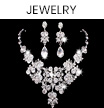
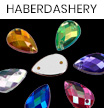




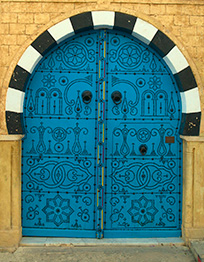
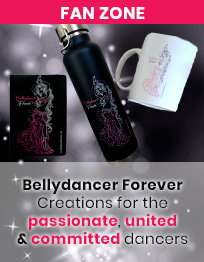
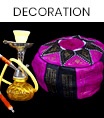

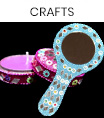

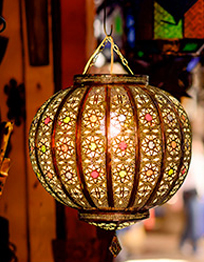


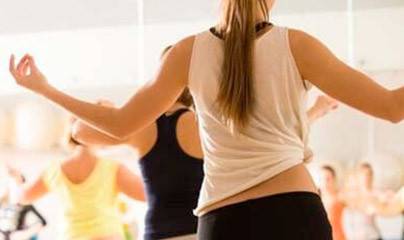

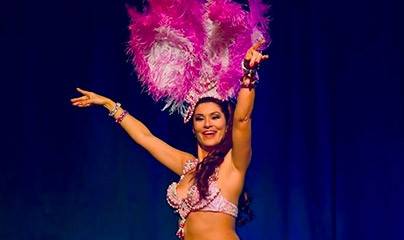
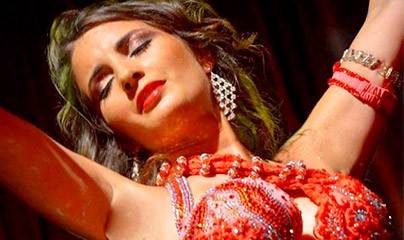

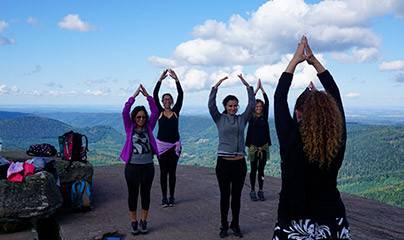
Leave a comment
Login to post comments